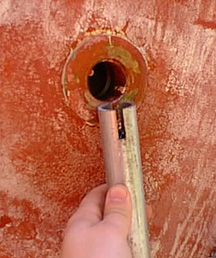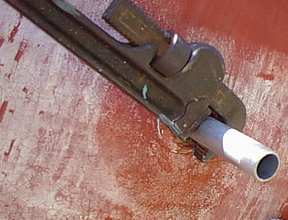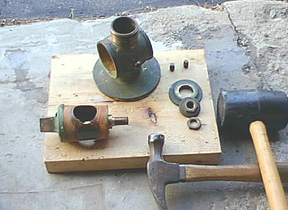For the past couple of years, I have been trying to coax open a 1.5-inch seacock with the hopes of utilizing as a discharge for the head when operating offshore. Unfortunately, the valve was solidly siezed in an almost closed position. The cap on the end of the pipe was also not quite watertight, so I've had a perpetual wet spot next to the head for a couple of years.
Last year I began to attack the valve with penetrating oil ("Liquid Wrench") and, after a couple of weeks, applied as much leverage as I could to the valve's handle. I succeeded only in bending the handle. The bolts holding the valve cock in place were removed and a hammer was applied to the plug to try to remove it. No go. I sailed another season with a leaking thru-hull.
This spring I tried to remove the entire seacock and succeeded only in spinning the entire assembly, breaking what seal was left between it and the hull. Now I HAD to remove the valve before launching.

The inside of the thru-hull was liberally sprayed with penetrating oil in a last-ditch attempt to help loosen up the threads. A wrench was then placed on the interior fitting and lashed into position such that it could not move very far. (I was without a helper on the day I did this.)

Once removed, the seacock was given a good bath in penetrating oil from all sides and, with some effort, disassembled. A wire brush was used to clean off corrosion where it was worst and then a grinding compound was used to regrind the valve seat of the stopcock itself.

If you have anything to add, please send a note to This email address is being protected from spambots. You need JavaScript enabled to view it.. I'll add your contribution to this page.


